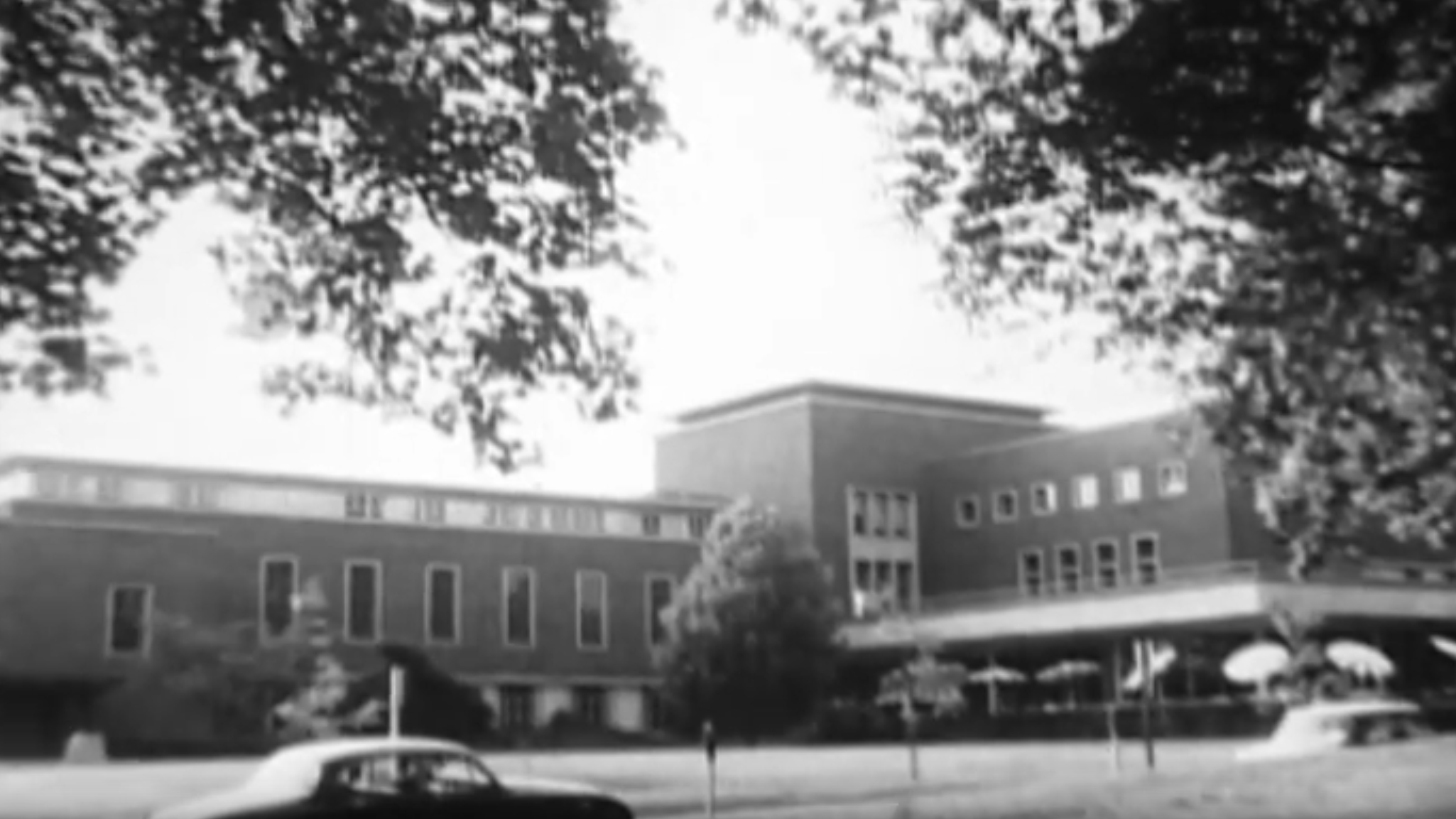by Staff | Sep 11, 2023 | News, Rare Books, This Week in History, Today in History
This year celebrates the 550th anniversary of the first book printed in the English language, Recuyell of the Historyes of Troye (1473-1474). This monumental achievement was accomplished by William Caxton, an English merchant living in Bruges. The story of the first...
by | Nov 9, 2018 | Collection Highlight, New Collections, This Week in History, University History
In recognition of the upcoming 100th anniversary of Armistice Day, we are highlighting a recent acquisition of two short sketched vignettes in watercolor documenting University of Oregon student life during and after World War I. “Over Here: A Striking Scenerio [sic]...

by Scott Greenstone | Oct 6, 2016 | Digital Collections, Events, Moving Images, This Week in History, University History
The EMU is celebrating its reopening Thursday and Friday—the building is full of new food, new spaces and even a Duck Store. But fifty years ago, the EMU was a lot different. This is a video filmed in 1966 by a political science student named Ken Settlemier, who was...
by | Jun 7, 2016 | Manuscripts, News, This Week in History
Jack Olsen was a journalist who wrote for Sports Illustrated and later wrote true crime books. His was the very first biography of Muhammad Ali. UO Special Collections and University Archives has Jack Olsen’s Papers, check out the finding aid here. Listen to an...
by Zach Bigalke | Jun 11, 2015 | Collection Highlight, Documenting UO History Project, This Week in History, University Archives, University History
This week we are presenting a three-part series highlighting the history of graduation at the University of Oregon. Part one (Tuesday) takes a look back at commencement ceremonies from the the 19th century, part two (Wednesday) features a recent donation of graduation...
by | Jun 10, 2015 | Collection Highlight, Documenting UO History Project, New Collections, This Week in History, University Archives, University History
This week we are presenting a three-part series highlighting the history of graduation at the University of Oregon. Part one (Tuesday) takes a look back at commencement ceremonies from the 19th century, part two (Wednesday) features a recent donation of graduation...


